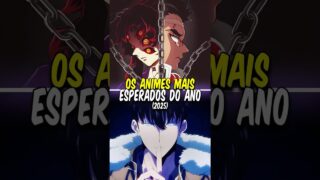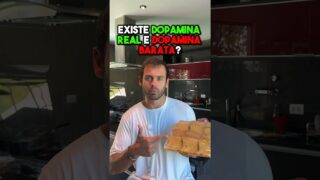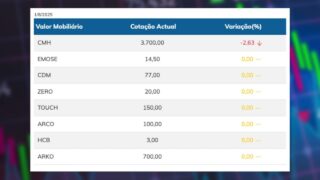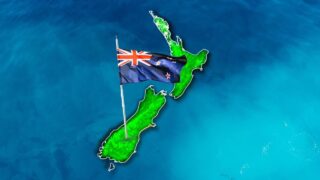I went to a country that doesn’t exist on the map / The USSR still exists on the border with Ukraine
0[Music] We’ve pulled over on the highway on our way to the checkpoint between Transnistria and Muldova. It’s a close ride now. Honestly, I’m a little nervous. For those who don’t understand why, let me explain why a trip to Transnistria right now is a pretty risky affair for me. Transnistria is an area called by some a potential second front for Russian and Ukrainian forces. It is located fairly close to the Ukrainian border and heavy action is taking place currently just over a 100 miles or a 2-hour drive away. [Music] Since late April, things have gotten weird here. A dozen incidents have taken place that the Transnistrian authorities labeled as terrorist attacks. Today around 5:00 p.m. what felt like explosions rocked the area near the Ministry of State Security in Taspel. It has later been confirmed that the Ministry building was hit by a grenade launcher in Gregoriople. Unidentified asalants attempted to blow up radio towers. At 2 a.m. today, a second attempted attack on the Mayak radio tower took place. Given all this, Transnistria has raised the Republic’s terrorist threat to red. Checkpoints have been set up on all major roads, checking thoroughly everyone entering or leaving. All cities are being heavily patrolled. And another factor is at play here. Major Russian military task force has been stationed here for nearly 30 years, waiting for Moscow’s orders. It’s basically an army that has always been on standby and could be deployed at any moment or not. No one knows. But the point is that when someone with a camera who is not a government approved journalist comes to Transnistria without an invitation or any mandate and starts asking everyone questions that is surely going to raise a lot of suspicions. [Music] So what is Transnistria? In simple terms, it’s an unrecognized breakaway republic backed by Russia. It declared its independence some 30 years ago. Transnistria was part of the Mulavian Soviet Socialist Republic, which in turn was part of the Soviet Union. Once the USSR got dissolved in 1991, many of its former republics went on to claim independence as new nation states. However, in Muldova, an internal conflict developed between the two parts of the republic, separated by the Niester River. So, this is the Nester. Transnistria is on the right bank. Muldova’s on the left. When the Soviet Union collapsed in 1991, Muldova, back then part of the USSR, declared independence, but the region on the left bank of the Niester refused to be part of the new Muldovian state. The standoff quickly escalated into an armed conflict. To understand the underlying reasons, we need to go back in time. As the USSR was getting nearer to its collapse, ethnic tensions were growing in its republics. Moscow’s authority waned while people turned to new local leaders. In Malddova, a separatist movement gained strength that advocated for breaking away from the USSR and forming an independent nation state that would look up to Romania, historically seen as Muldova’s big brother nation. However, besides Muldoans, the republic was home to some Ukrainians, about 10%, and Russians, about 9%, who predominantly lived in what’s now called Transnistria on the left bank of the Niest. People there were against the pro- Romanian state and wanted to remain part of the Soviet Union. In 1992, on this very spot right behind me, a war broke out. One side called it a fight against Romanian occupiers. The other side called it a fight against Russian aggression. [Music] It looks just like any other Russian town with worn down Soviet era apartment buildings and faded road signs that will soon be barely legible. Courtyards with cars parked on sidewalks naturally. And look, a frozen ferris wheel creaking eerily in the wind. [Music] Terraspo makes me feel a lot like I took a trip back in time to the Soviet Union. I have found myself literally reliving flashbacks from my own childhood. This cracked asphalt. Remember those massive cracks everywhere? And that’s the city’s central square for you. I’m crouching to give you a better look. And see this massive authentic Soviet building and the giant statue of Lenin. You know, it even smells here like it smelled in the USSR. [Music] [Applause] [Music] [Applause] Terrascal is transnistrious. capital city. Yet, I don’t get the feeling of being somewhere abroad. I feel like I’m home in Russia. Same low-rise apartment buildings you’d find in any Russian town. Laundry drawing on clothes lines, balconies cramped with residents stuff. This is a typical urban landscape in Transnistria, which doesn’t look any different than, let’s say, my home city, Samara. The same standard issue era residential buildings, the same flower-filled tire planters. I absolutely don’t feel like I’m outside of Russia. No, everything looks familiar down to the last detail, such as parked cars, kids playing soccer, playgrounds, and everything on them. Could anyone say this isn’t Russia? I don’t think so. Muldova’s currency is called Moldovven Leo. In Transnistria, they use rubles, but not Russian rubles, local ones. Transnistria has its own currency. They’re called the transnition ruble. Nearly all bills feature Count Alexander Suvorov, who is the local hero on these small notes here. And you can find exchange offices literally anywhere, like in a corner of a grocery shop here. Visa and Mastercard haven’t worked here for ages. Russia’s Mir cards work, but with limitations. They allow you to withdraw only cash from ATMs, but forget about paying with Mir in restaurants. That’s not happening anymore. [Music] This parking lot is like a flashback from Russia in the 1990s. Same old posh western cars like this old Mercedes. And over there are some Audi’s that have seen better days. Just looking at these cars, I feel transported 20 to 30 years back in time. Though maybe soon things might change in our neck of the woods, too. Who knows? Muldova still considers Transnistria part of its territory, so the rules for border crossing are lenient. There are barely any checks. Transnistria issues its own license plates, but you can’t cross into other countries with them. So, they came up with a workaround. Ukraine doesn’t grant entry to vehicles with Transnistrian license plates, and neither does Romanian. So Muldova issues special neutral plates for Transnistrian vehicles with the same numbers only without the Transnistrian flag. With these they can travel to Ukraine, Romania and beyond. [Music] Meet Arena, born and raised in Transnistria. She’s 19 now. She cannot pay for any internet subscriptions, nor can she buy goods online. International bank cards don’t work here. We do have some bank cards like Spur Banks and Agroprom banks, but they only work in Transnistria. And there’s also XM bank, I think. So, for example, how do you pay for online services? Say if you want to buy an Apple Music subscription or something like that, you’d need to have an active Visa card. So, how do people pay then? They don’t unless they have a Visa card. That’s all. So, they just pirate music sometimes. Yeah. Arena is a choreography student. Recently, she wanted to take an online course, but couldn’t pay for it with her Transnistrian bank card. People literally can’t do much here in terms of career. Even simple things like buying an online course is a struggle. You’ve got to ask friends who have a Visa card to pay for whatever you need. I used to ask my friends, too. [Music] A typical site in a Transnistrian residential neighborhood. See a fence made of the same good old tires. People definitely like to put these to good use. And next to the apartment blocks, here’s this little kiosk. A small grocery business catering to local residents, selling tomatoes, cucumbers, apples, and whatnot. We used to have kiosks like these in Russia decades ago, too, in case you didn’t know. But they haven’t been seen for a long time now. Once again, it feels like a flashback straight from my childhood. [Music] Just look at this. I am now in the northern district of the city of Bendere or Bender. And this here is a former Soviet store. I can see by what’s left on the lettering on the sign that it used to say, I think grocery and store. That’s what it looks like now. And as I look inside, I recall how it felt inside stores like this in the USSR when I was a kid. They had a lot of space and different departments for different kinds of goods. Bandere is a very special city because it is located basically right between Muldova and Transnistria. They don’t have any border control here and the place is policed both by Muldovin and Transnistrian police. So, Bandere is like a buffer zone between Muldova and Transnistria. And if you look at it, you realize that life froze here some 20 to 30 years ago. Transnistria’s entire population is around half a million people. And the republic has three official languages, Muldovin, Russian, and Ukrainian. For 30 years now, it remains an internationally unrecognized state recognized only by breakaway republics of Abcasia, South Asia, and Nagora Carabach. that remain unrecognized themselves. Life here is far from peachy with an average salary of $300 a month. Instead of colorful digital ads on streets here, they have these old school bulletin boards covered with handmade paper ads. On this block, I have walked into this fascinating relic. This bulletin board. Haven’t seen one of these in forever. Look, looking to buy a new Ural motorcycle. Imagine this dude was like, “Damn, how do I buy a motorbike in a store? Online? Nah, I’ll just slap a piece of paper with my number on a board next to some houses. Let’s see what else they got. Looking to buy a house/ apartment? You see, people even pre-cut these little tabs to make tearing off a number easier for potential sellers. Let’s see. Ads for windows, doors, balconies, moving services to Moscow or St. Petersburg via Europe, apparently. And here’s someone’s handwritten ad for sale window 7 by 6 ft. Okay, that’s not all. The same dude is also selling, wait for it, an aloy vera plant. Fancy an aloe vera plant? I don’t know. I somehow imagine this guy growing a plant on his window sill for three whole years just to sell it. Three years for medicinal purposes. That’s dedication. Here’s his number. I’m sure he’ll be thrilled if you call. So, if you need a loyer, I’ll zoom in for you here to get the number. I bet Transnistr is truly special. It must be. Now that I’m having so much fun, let’s see what else they’re selling. Okay, new sink for sale. This one’s handwritten on what looks like a sheet from a kid’s school notebook. It simply says, “A new sink in original packaging.” Plain and simple. [Music] You look to the left, someone’s selling fruit and veggies. You look to the right, someone’s selling meat, fish, and dairy. They’ve also got detergent and soap. Basically, a one-stop shop. A bit farther, a guy’s hurting goats. It’s totally normal here. And check this out. He’s got a folding stool to comfortably sit while his flock grazes the neighbors’ lawns. Even at a first glance, anyone can tell that Transnistria is quite a poor country. The only place that’s kind of pretty is the city center in Teraspole and that’s it. Everything else is not much to look at to be honest. Both quality of life and average income are very low. On the average, people make 3,000 to 3500 ruples per month. That’s about $200. Obviously, it’s very hard to live on, so many people leave. Most locals choose to hold more than one passport. Out of 500,000 Transnistrian citizens, 200,000 have also received Russian citizenship and 150,000 Ukrainian. Are you a citizen of Transnistria? I’ve got a dual citizenship, Transnistrian and Russian. Transnistria’s education system follows the Russian model. School kids also have to take the unified state exam and the higher education system is also the same. The problem is only Russia recognizes Transnistrian diplomas while neighbors like Muldova and Romania and Ukraine don’t. Most of the time, our degrees are only recognized in Russia. Naturally, most young people here want them to be recognized in Europe. Young people dreaming of getting out of here are willing to do hard seasonal work if it gets them into Europe. Many leave. Most of them go to Muldova or Poland or Germany. There are some who have managed to get into the UK. I know a couple. Arena thought about doing the same, but she’s not sure if it’d be safe for her to go on her own. I know a guy who went to England for seasonal work. At first, I think he went to pick strawberries. He said they had to pick only perfect strawberries. They’re really particular about that in England. And it’s the same with apples. There has to be not a single spot. So, every strawberry has to be absolute perfection. and he told me he was making about 2,500 a month doing this. [Music] Although Transnistria considers itself an independent country, in fact, it depends a lot on its neighbors, Muldova, Romania, and of course, Ukraine. [Music] This is what Terraspal’s train station looks like now. It is literally Transnistri’s major railway hub. And there’s not a single soul in sight. Look at it. I don’t know about you, but this site gives me strong apocalyptic vibes. The kind I felt during my visit to Chernobyl. There’s absolutely nobody here. Just a lone dog on the platform. The reason being, there’s nowhere to go. There used to be a railway connection with Odessa, but it has been disrupted by the hostilities in Ukraine. So, this is why it is as it is, empty, still lifeless. It probably won’t take long for a grass to grow tall on the unused railway tracks. I am now in the transnistrian city of Bandere. It was at the epicenter of the Transnistrian conflict back in the 1990s, one of its hottest spots. If you recall, I already mentioned that as the USSR was nearing its collapse, many people in Soviet republics were turning away from Moscow in favor of locally emerging pro-western leaders. There were also those who disagreed and wanted to keep up ties with Moscow. The two camps failed to negotiate a peaceful agreement. In Transnistria, there had been skirmishes and acts of violence for 2 years before it all escalated into a war that broke out on March 2nd, 1992. This fence was right here back in 1992. And it was literally the front line of the conflict. Muldoven forces fought from this side. Transnistician fighters from that side. The fence served as a shield for the Moldovvens. And if you look closely, you can see these holes in it. These are man-made loopholes. Fighters made these holes to stick their guns through and shoot at the other side. The fence itself, of course, took plenty of bullets. [Music] Here lies the soldier, Berice Dovkan. Bis Dovkan was Anatoli’s friend. An armor-piercing shell hit the armored personnel carrier he was operating. The projectile went straight through his chest and out his back. It was a horrifying sight what we witnessed at that moment. According to Anatoli, local skirmishes escalated into full-scale battles after an attack on this checkpoint. A number of troops came from over there and attacked this post. There were five or six policemen in this post. The attackers immediately demanded surrender. The driver who was with the police team started the engine. And the moment he started it, the driver in your checkpoints team, yes, he was with our police crew. And as soon as he started the engine, they shot at him and they killed him. Anatoli fought for Muldova. People in Transnistria say things went down differently. They believe they were attacked and were simply defending themselves. They began using artillery fire. By June um they started a full-scale invasion of Transnistrian territory, specifically the city of Bandere where real urban combat broke out. The fight for Bandere city administration building was extremely fierce. Armored personnel carriers took turns to drive into the square and maintain fire, targeting the building. As one retreated, another would take its place. Though returning fire was nearly impossible, the building’s defenders managed to hit an anti-aircraft gun. moving down Seor Street. Later, Casc managed to destroy two APCs. Unfortunately, they were killed during the mission. Today, it’s extremely difficult to establish all facts definitively. All we have are eyewitness accounts of those terrible events, each with their own perspective. Another city where the tensions were high was Dubasari. In Dubasari, they attacked the police Kamasaria. The confrontation between police and militia was one of the pillars of the conflict. Pro-western establishment in Muldova had decided to reform the former Soviet militia and rename it to the police. As per the western tradition, part of the population had a negative reaction to the move. Clashes began between the Muldoven police and transnistrian militia. Those calling themselves militia refused to accept. They attacked the commissariat and arrested 32 or 34 police officers. [Music] They were taken to Terraspole to the so-called Transnistria. Their pretext was that they didn’t want Romanians attacking Transnistria and they didn’t want to be renamed. Abductions and even killings of law enforcement servicemen became commonplace sadly on both sides. First they threatened officials on the phone. Then they started arresting those officials. Then came the crackdowns on civilian protests. Eventually they just started shooting at people. While initially both Muldovans and Transnistrians avoided unnecessary gunfire, at some point both sides seemed to have lost it, which resulted in the bloodshed. They took two of our men prisoner, brought them to Dubasari, beat them, interrogated them, tortured them. The battle for the Niesta raged on, attack after attack. The time Maria Biscar lived right by the river. She carried food to volunteer fighters in the trenches under gunfire. Bullets came from all sides. I had to make my way crouching. So much blood was spilled that night. By the morning, Muldovven APCs came with white flags. They took all the wounded and sick to the hospital. All that blood. There was so much blood spilled here. Maria is still haunted by those terrible events. Most importantly, she still refuses to call them justified in any way. Personally, I know that we never did anything wrong to anyone. There was nothing. Russians and Muldovvens weren’t fighting here. There was no bad blood between us. And then there was a war all of a sudden. Why? What caused this war? We don’t know why. According to Maria, no people were ever harassed here based on the language they spoke. And certainly, there was no Romanian takeover. There were never any Romanians here. However, the narrative that Romania would take over both Malddova and Transnistria was spread in order to justify military action. People were told they were being protected. They said they were protecting us. Protecting us with bombs and machine guns. Killing people. Is that protection? That war took Radica’s father and her mother lost her husband. When the Muldovven Transnistian conflict began, he volunteered to join the fight. He worked for the railroad. With three children, he didn’t have to join the army. But he said, “I can’t just watch them come and hurt my family.” So, he went to defend his homeland, his family. Her husband was killed 3 days before the war ended. She found out as she was getting ready for work. I went to the morg and they didn’t let me inside. Why else would I be there? How could I know anything? They finally let me in. I recognized him just by looking at his feet. He was lying there, first in line. She went on to look at his face. When I got to his face, it was torn apart here and there. His arm wasn’t as bad. They were kind enough to drive me back to the village, and I was to deliver the news. There were no phones back then to call his parents. They were still alive, so I went. I had to go through the gardens and my legs were not my own. I just hoped I’d make it closer to the house so they’d find me if I fell. That’s it. I don’t remember much after that. A nurse came by. What else is there to tell? We buried him. [Music] It’s been 30 years, but the pain still lingers. [Music] Just think about it. The country was devastated by the war and she was left with three children. She had no money. She couldn’t even buy clothes for her children. The family barely scraped together pennies for food. It may be hard to believe now, but they fled that war to Odessa to Ukraine. Now they are refugees again. After the escalation of conflict in Ukraine, they had to leave their home once more. This time fleeing Odessa and coming back here to Transnistria. I was studying in a college in Romania. I saw the news on TV. They said that fighting had begun and there was footage of my village in the report. I couldn’t believe it. I never thought something like this could happen. Anatoli saw on TV his mother bringing food to soldiers at the front lines. He decided to drop out of school and run home. To this day, he still doesn’t understand why it had to come to so much bloodshed and ruined lives. They took my cousin Anatoli to Dubasari. This isn’t hearsay. Anatoli himself told me what happened, how they tortured him and shot him in the legs, then just dumped him in a garage where he lay for 3 days. His legs swelled up. His wounds got infected. His cousin was able to be saved. A true miracle. But that conflict, which Anatoli believes neither Muldovans nor Transnistrians ever wanted, claimed thousands of lives and at least 500 of them were civilians. I recall accusations being thrown at Muldova back then. They said, “We’ve got Romanians, nationalists, Nazis running around here. Sure, we had a patriotic group of young people, writers, intellectuals who genuinely wanted to restore historical justice and to have Muldova switch back to Latin script. But Anatoli doesn’t understand how language discussions could ever escalate into an armed conflict. And most importantly, why? After all, he’s speaking Russian to us right now like most Muldovans do. I’m speaking Russian with you. I’m not Russian. and I have many Russian speaking friends and my best friend lives in Moscow. We grew up together. Ratica’s mother who lost her husband in the Muldoven transnian conflict and was forced to flee to Ukraine back then has been forced to flee from a war again. As if one tragedy was not enough. Again, we had to run. But where too? Who’s waiting for us anywhere? That’s why so many volunteers helping Ukrainians now come from the places that suffered from war back in 1992. We understand them better because we know exactly what they’re feeling. When I listen to someone whose life was destroyed by war, only for another war to deliver another blow, it sends chills down my spine. I don’t know about you, but personally, I believe every word she says. War is never a solution to anything. Nothing at all. I’ve thought about it all these years. Why? Why kill people? Why? Why fight over a piece of land? Just live in peace. Let people live. Life is hard enough as it is. Everything’s expensive. Unemployment is high. Wages are tiny. Leave people alone. Let them just live. [Music] You know, I have talked to both Muldoans and people in Transnistria and I realized that they’ve learned a crucial lesson from their history. That no problem in life can be solved by force, by war, by killings. 30 years after the war, they don’t hate each other because all this time they’ve been learning to live in peace. Now, I’m not saying the same will happen with us and Ukrainians. I’m not sure. I don’t know. Truth be told, it’s hard for me to talk about this now. Things have gone too far. But the mere fact that Muldovans and Transnistrians have managed it, that alone gives me a flicker of hope because it means that people and nations can learn from history in a way that leads to peace. [Music] walking through Chisel. Now, I noticed an amazing thing here. They’ve got Moscow Avenue, which is directly followed by Key of Street. I’m not kidding. I’m getting goosebumps just saying this. Now, follow me. Here is an underground pedestrian crossing. And on this side it says Moscow, while on the other side it says Kiev. I’m telling you, I’m so excited getting goosebumps all over. In this short tunnel, I realize that Moscow and Kiev haven’t been this close to one another for what feels like forever because on one wall there’s a photo of the Kremlin. On the other wall, views of central Kiev. Here’s Moscow’s Bolshe Theater. There, a symbol of Ukraine’s independence. Over here, the building of Moscow State University. There, the Mother Ukraine monument. And no fighting. None at all. It’s astonishing that a tunnel like this even exists now. Being here is an unbelievable feeling. Honestly, [Music] when you realize that this is actually possible. It’s overwhelming and in the end it sparks something that feels almost like hope. [Music] Heat. Heat. [Music]









